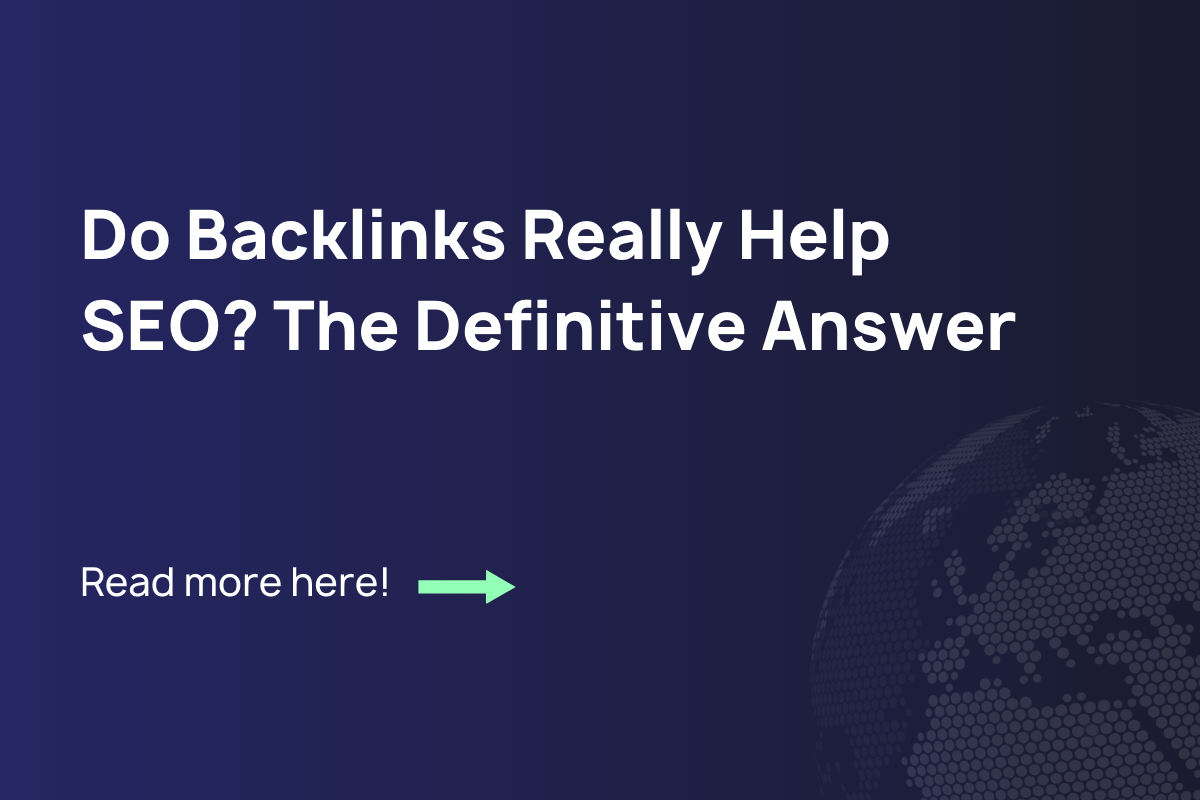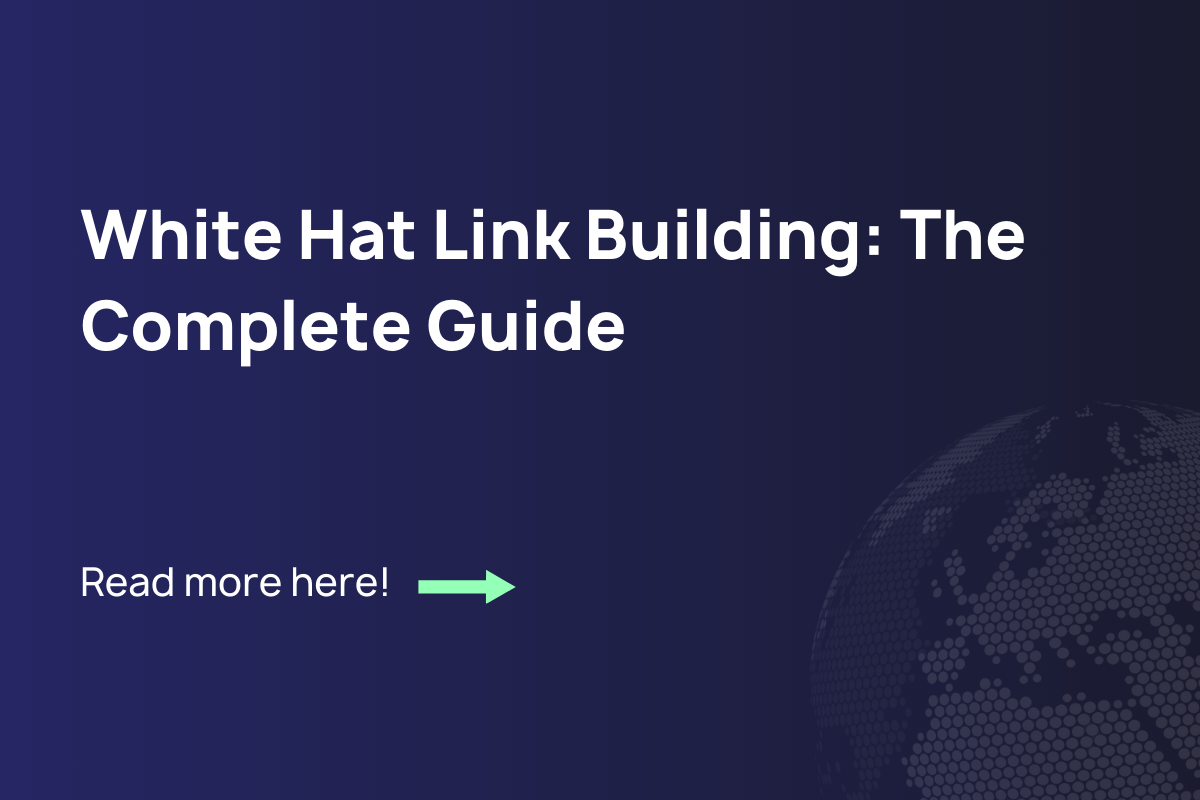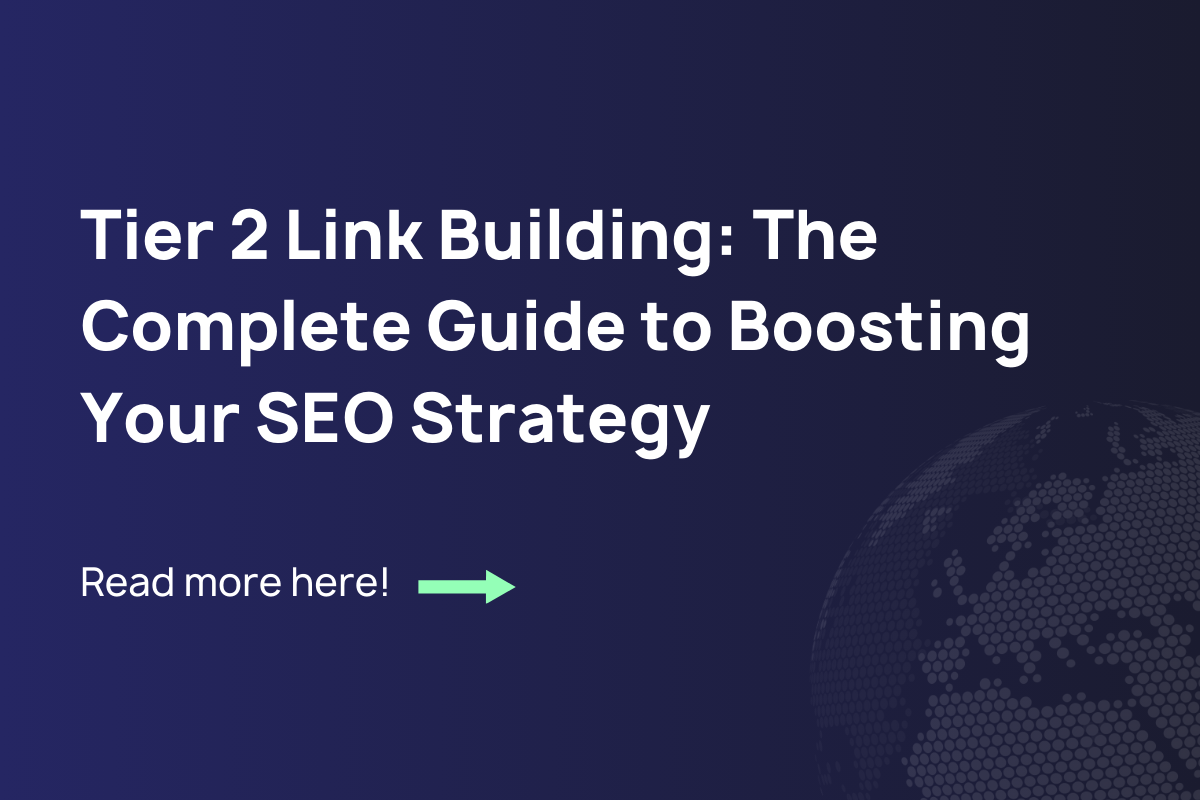Ever felt like you’re shouting into the void with your content? You create amazing articles, optimize your on-page SEO, and yet… nothing happens. Your competitors somehow keep outranking you despite having mediocre content.
The missing piece? High authority backlinks.
In today’s hyper-competitive digital landscape, quality backlinks aren’t just nice to have—they’re essential currency in Google’s eyes. But not all backlinks are created equal. The difference between ranking on page one or page five often comes down to the quality and relevance of your backlink profile.
This guide will take you through everything you need to know about high authority backlinks: what they are, why they matter, and actionable strategies to acquire them in 2025. Whether you’re an SEO veteran or just starting out, you’ll find practical tactics that deliver real results.
What Are High Authority Backlinks?
High authority backlinks are inbound links from respected, trusted websites that pass significant ranking power to your site. Think of them as votes of confidence from established players in your industry—each one tells Google, “This content is valuable and trustworthy.”
But what exactly makes a backlink “high authority”?
It’s a combination of several factors:
- Domain Authority/Rating: Links from sites with high DA/DR metrics typically transfer more ranking power
- Relevance: Links from sites in your niche or related industries carry more weight
- Traffic: Sites with significant organic traffic provide more valuable backlinks
- Editorial standards: Links from sites with strict content guidelines signal higher quality
- Natural link placement: Contextual links within relevant content outperform random placements
As Magnus Schmidt (an international link building specialist) puts it: “When Google can’t decide which of several pages has the best content, it often defaults to considering which site has earned the most trust through quality backlinks.”
How Google Judges Link Quality
Google’s link evaluation has evolved dramatically since the days of simply counting backlinks. Today, their algorithms use sophisticated signals to determine link quality.
When Google analyzes a backlink, it’s looking at multiple dimensions:
- Source authority: Is the linking site trusted and established in its field?
- Context relevance: Does the link appear in content related to your topic?
- Link placement: Is the link naturally integrated into content or stuffed artificially?
- Link velocity: Are you gaining links at a natural pace or suddenly getting hundreds?
- Anchor text: Is the text containing your link descriptive and natural?
Google’s John Mueller has repeatedly emphasized that quality trumps quantity when it comes to backlinks. One high-quality link from an authoritative site in your niche can outweigh dozens of low-quality links.
Domain Authority vs. Domain Rating
Before diving deeper, let’s clarify two metrics you’ll encounter constantly in the backlink world:
Domain Authority (DA)
Created by Moz, Domain Authority predicts how likely a website is to rank in search results. It’s measured on a scale from 1 to 100, with higher scores indicating greater authority.
DA considers:
- Total number of linking domains
- Link quality
- Content quality signals
- Site age and historical factors
Domain Rating (DR)
Ahrefs’ Domain Rating also measures website authority on a scale of 0-100 but focuses more specifically on the strength of a site’s backlink profile.
DR evaluates:
- Number of unique referring domains
- Authority of those referring domains
- Distribution of links across the site
Why Use Both Metrics?
While both metrics attempt to quantify site authority, they calculate it differently. Using both provides a more comprehensive view of potential link opportunities.
Remember: DA and DR are third-party metrics, not direct Google ranking factors. They’re useful indicators, but shouldn’t be your only consideration when evaluating link opportunities.
When is a Website Considered High Authority?
“What DA/DR score makes a site ‘high authority’?” This question comes up constantly, but there’s no universal threshold.
Generally speaking:
- DA/DR 40+: Moderately authoritative (good targets for most sites)
- DA/DR 60+: Highly authoritative (excellent targets for any site)
- DA/DR 80+: Exceptionally authoritative (major publications, institutions)
However, authority is relative to your industry and current site strength. If your site has a DA of 20, links from sites with DA 30-40 still provide significant value.
More important than the specific number is the site’s:
- Topical relevance to your industry
- Editorial standards and content quality
- Organic traffic and engagement
- Natural link profile (not artificially inflated)
As one SEO specialist I worked with put it: “I’d rather have a DA 40 link from a respected industry publication than a DA 60 link from a general site with no relevance to my niche.”
Quality over Quantity: Why It Matters
In the early days of SEO, success often came down to who could build the most backlinks. Today, that approach can get your site penalized.
Google’s algorithm updates (particularly Penguin) fundamentally changed link building forever. Sites with thousands of low-quality links suddenly found themselves plummeting in rankings as Google began rewarding quality over quantity.
A 2-year experiment by Search Royals found that 5 high-quality contextual links from relevant sites with DA 50+ outperformed 50 lower-quality links from DA 20-30 sites. The high-quality link approach resulted in:
- 216% more organic traffic
- Rankings for 37% more competitive keywords
- 89% higher conversion rates from organic traffic
This shift has only accelerated in 2025, with Google’s AI systems becoming increasingly sophisticated at evaluating link quality and relevance.
7 Core Strategies to Build High Authority Backlinks
Now for the actionable part: how to actually secure these valuable links. Whether you’re handling this in-house or considering link building services, each of these strategies has been field-tested and proven effective in 2025’s link building landscape.
1. Guest Posting on Authority Websites
Despite claims that “guest posting is dead,” it remains one of the most reliable ways to secure quality backlinks—when done correctly.
The process:
- Identify authoritative sites in your niche that accept guest posts
- Study their content style, audience, and submission guidelines
- Pitch unique, valuable content ideas (not generic topics)
- Deliver exceptional content that exceeds their expectations
- Include natural, contextually relevant links to your site
Pro tip: Focus on establishing relationships with editors rather than one-off posts. Becoming a regular contributor dramatically increases your success rate and link opportunities.
2. HARO and Media Outreach
Help A Reporter Out (HARO) and similar platforms connect journalists with expert sources. This creates opportunities for high-authority media mentions and backlinks.
For consistent success with HARO:
- Respond quickly to relevant queries (ideally within 2-3 hours)
- Provide concise, quotable insights (journalists rarely use lengthy responses)
- Include credentials that establish your expertise
- Follow up with additional value after your quote is used
One of my clients secured links from Forbes, Entrepreneur, and Business Insider in just three months through consistent HARO participation—generating over 15,000 referral visits.
3. The Skyscraper Technique
This approach, popularized by Brian Dean, involves:
- Finding Popular Content: Identify high-performing content in your niche that has attracted many backlinks
- Creating Something Better: Develop a significantly improved version with more depth, better design, newer information, or unique insights
- Finding Link Prospects: Use tools like Ahrefs to identify who linked to the original content
- Strategic Outreach: Contact those sites, showing how your content improves upon what they’re currently linking to
The skyscraper technique works because you’re offering genuine value—a better resource for sites to link to rather than just asking for a favor.
4. Broken Link Building
This strategy turns a webmaster’s problem into your opportunity:
- Find resource pages or content in your niche with external links
- Use tools like Check My Links to identify broken links on these pages
- Create content that could replace the missing resource
- Contact the site owner, alerting them to the broken link and offering your content as a replacement
Broken link building has an above-average success rate because you’re helping the site owner fix an issue while providing a solution.
5. Strategic Link Exchanges
While indiscriminate link exchanges can trigger penalties, strategic collaboration with relevant sites can be effective when done properly.
Guidelines for ethical link exchanges:
- Partner only with relevant, quality sites in your industry
- Focus on contextual links within valuable content
- Avoid direct reciprocal links (A→B, B→A)
- Use three-way exchanges instead (A→B, B→C, C→A)
- Prioritize content value over link placement
Remember, Google doesn’t penalize relevant, editorial links between related sites—only manipulative schemes designed to game the system.
6. Create Link-Worthy Content
Some content naturally attracts links without extensive outreach:
- Original Research and Data: Industry surveys, trend analyses, and data visualizations
- Comprehensive Guides: Ultimate, definitive resources on specific topics
- Tools and Calculators: Interactive resources that solve specific problems
- Expert Interviews: Insights from respected industry leaders
- Unique Visuals: Infographics, diagrams, and process illustrations
The key is creating something that serves as a reference point—content people naturally want to cite when making arguments or explaining concepts.
7. Authority Resource Pages
Many universities, professional organizations, and industry sites maintain resource pages linking to valuable content in their field.
To get featured on these pages:
- Identify relevant resource pages using search operators like “your topic + inurl:resources” or “your topic + useful links”
- Create content specifically designed to be resource-worthy (guides, tools, research)
- Reach out with a personalized pitch explaining why your content would benefit their audience
Resource page links are particularly valuable because they’re highly contextual and come from pages specifically designed to direct visitors to quality content.
How Authority Backlinks Differ from Regular Backlinks
Not all backlinks deliver equal value. Understanding these differences helps you prioritize your link building efforts.
Trust and Reputation Transfer
High authority backlinks transfer trust and reputation to your site. When Google sees authoritative sites linking to you, it assumes your content meets similar quality standards.
Content Quality Association
Links from sites with strict editorial standards (like major publications) signal that your content has passed rigorous quality checks. This association elevates your perceived content quality.
Impact on Rankings
Studies consistently show that a few high-authority backlinks can impact rankings more dramatically than numerous lower-quality links. One client saw rankings jump from page 3 to position #5 after securing just two links from industry-leading publications.
Longevity and Stability
High authority links tend to provide lasting value, while lower-quality links often depreciate quickly or may even become harmful if the linking sites are penalized.
Common Mistakes to Avoid
Even experienced SEOs make these mistakes when pursuing high-authority backlinks:
1. Adding Links That Don’t Fit
Forcing links into irrelevant content or discussions undermines your outreach success and can damage your reputation with site owners.
2. Ignoring No-Follow Links
While dofollow links pass more direct ranking signals, high-quality nofollow links from authoritative sites still drive traffic and build brand credibility. Don’t dismiss these opportunities.
3. Using Generic Outreach Templates
Mass-produced outreach emails get mass-deleted. Personalization isn’t optional—it’s essential for securing responses from quality sites.
4. Buying Links from Questionable Sources
Purchased links from link farms or low-quality networks might provide temporary ranking boosts but carry significant penalty risks. The cost of recovery far exceeds any short-term gains.
5. Not Tracking Results
Without proper tracking, you can’t identify which link building strategies are delivering results. Implement systems to monitor both new links and their impact on rankings and traffic.
How to Measure the Success of Your Authority Backlinks
Effective link building requires measuring both inputs (new links acquired) and outputs (resulting improvements).
Track these key metrics:
1. Rankings for Target Keywords
Monitor position changes for your primary keywords after securing new high-authority links. Significant links often produce ranking improvements within 3-6 weeks.
2. Domain Authority/Rating Growth
Track your site’s authority metrics over time as you build quality links. Consistent improvement indicates successful link acquisition.
3. Referral Traffic
High-quality links should drive actual visitors—not just ranking signals. Monitor referral traffic from your backlinks to identify which sources send engaged visitors.
4. Conversion Rate from Referral Traffic
The ultimate measure of link quality isn’t just traffic but how well that traffic converts. Some of our most valuable backlinks generate fewer visitors but higher conversion rates.
Case Study: Real-World Results from Authority Link Building
A mid-sized e-commerce client came to us struggling with declining organic visibility despite regular content production. Their backlink profile consisted primarily of lower-quality directories and forum links.
The challenge: Build high-authority, relevant links to boost domain authority and recover organic rankings.
The strategy:
- Created two original research pieces analyzing industry trends
- Developed an interactive tool solving a common customer problem
- Implemented a targeted HARO response campaign
- Secured guest posting opportunities on industry publications
Results after 6 months:
- 16 new links from domains with DA 50+
- Domain Authority increased from 28 to 39
- Organic traffic grew by 157%
- Conversions from organic search increased by 94%
The key insight wasn’t just the improvement in metrics but how the quality links created a compounding effect—as our client’s authority grew, securing additional high-quality links became progressively easier.
High authority backlinks are not for the faint of heart
Building high-authority backlinks isn’t a sprint. It’s a strategic marathon that requires patience, creativity, and persistence. Many businesses choose to outsource link building to specialists because the landscape has evolved far beyond simply accumulating links toward earning recognition from respected sites in your industry.
As you implement these strategies, remember that sustainable link building is about creating genuine value. The most successful link builders don’t just ask for links; they create reasons for sites to want to link to them.
Start by identifying the highest-value targets in your niche, creating truly exceptional content, and developing personalized outreach approaches. Be prepared for rejection, but learn from each interaction to continually refine your approach.
With consistent effort and the right strategies, you’ll build a backlink profile that not only boosts your rankings but establishes your site as an authoritative voice in your industry—the foundation for long-term organic search success.
What’s your biggest challenge with building high-authority backlinks? Let me know in the comments, and I’ll help provide specific guidance for your situation.



